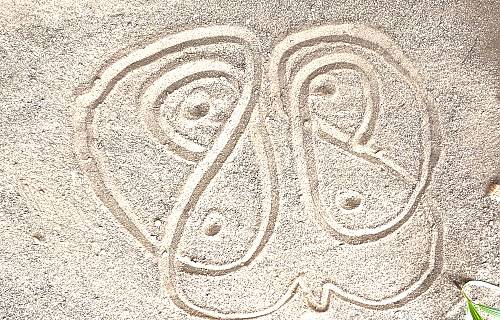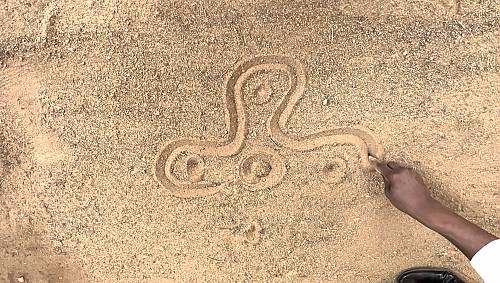Sona, drawings and geometric figures on sand
Inscribed in 2023 (18.COM) on the Representative List of the Intangible Cultural Heritage of Humanity
Sona refers to drawings and geometric figures on sand. Practised by the Lunda Cokwe and neighbouring peoples in eastern Angola, it is a form of expression that seeks to convey beliefs, thoughts and emotions, as well as the relationship between human beings and nature. Practitioners mark reference points on a wet floor covered in sand using their index finger and pinkie, then trace lines around these points. The figures and drawings are viewed as a means of transmitting stories, knowledge and collective memory to new generations. It is also practised as a decorative art. Sona is passed on during initiation rites for youth who are preparing to assume social functions. For practitioners, Sona is a means of promoting cultural identity, creating and consolidating collective memory and enhancing a sense of belonging. It is also an opportunity to maintain indigenous knowledge and transmit it to children and youth. In recent decades, educational institutes have started using Sona as a means of teaching and advancing knowledge about mathematics, ethnomathematics and anthropology, among others. The use of Sona by educational institutes and artists has allowed for its reinvention and dissemination, and for the reinforcement of knowledge and skills about Sona drawings from different perspectives.










